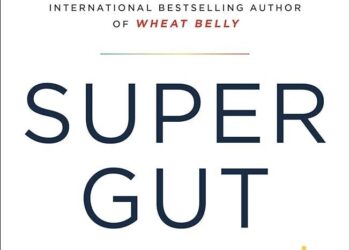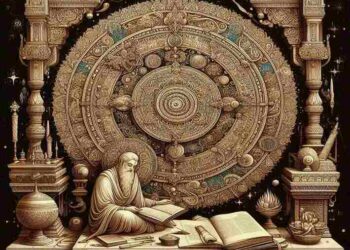Table of Contents
ToggleIntroduction
Critical Analysis Of The Top 5 Modern Classics The word “classic” is very important in the literary world. Literary masterpieces that endure and speak to readers of all ages are known as classics. Modern classics are a more recent phenomena, having gained attention over the past century for their contributions to contemporary writing, whereas traditional classics have long been cherished for their timeless cultural relevance and universal themes.
These pieces reflect the modern era’s developing literary styles, shifting human experiences, and sociopolitical shifts.
A novel or work of literature from the late 19th to early 21st centuries that has had a significant influence on readers, reviewers, and the literary community is referred to as a “modern classic.” They are nevertheless relevant and cherished today because they transcend their time and capture the complexity of contemporary culture.
Five modern masterpieces, each considered a cornerstone of contemporary literature, will be critically examined in this article along with their topics, characters, symbols, and overall contribution to the literary canon.
1. “Beloved” by Toni Morrison
One of the most powerful and haunting modern classics, Beloved by Toni Morrison, is a profound exploration of the legacy of slavery and the complexities of memory, trauma, and identity. Published in 1987, the novel is set after the Civil War and focuses on Sethe, an escaped enslaved woman who lives in a house haunted by the ghost of her deceased daughter, Beloved. The novel weaves themes of motherhood, freedom, and the struggle to reclaim the past in a post-slavery world.
Read More
1.1 Themes and Symbols
Morrison’s use of symbolism in Beloved is rich and layered. The ghost of Beloved herself is a symbol of both the haunting legacy of slavery and the inability to fully escape one’s past. The physical manifestation of the ghost brings the trauma of slavery to the forefront, as Sethe struggles with the guilt and pain of having killed her child to protect her from the horrors of slavery. The idea of “rememory” is also central to the novel, as characters are constantly revisiting their traumatic pasts, unable to escape its grip.
The house, 124, becomes another key symbol in the novel. It represents both a home and a prison, embodying the psychological scars of enslavement. The house is physically haunted, but it also symbolizes the mental and emotional hauntings that the characters experience due to the unresolved trauma of their pasts.
1.2 Character Development
Sethe, the central character, is a deeply complex and tragic figure. Her love for her children and her determination to protect them at all costs, even from death, makes her both a heroic and morally ambiguous character. Morrison uses Sethe’s internal struggle to demonstrate the devastating effects of slavery on individual identity and the human psyche. Through Sethe’s journey, Morrison asks essential questions about the cost of freedom and the lengths a person will go to for the sake of their loved ones.

2. “The Road” by Cormac McCarthy
Published in 2006, The Road by Cormac McCarthy is a chilling post-apocalyptic novel that tells the story of a father and son’s struggle to survive in a desolate, barren world. The novel is stripped of excessive description and dialogue, capturing the starkness and bleakness of life in a collapsed civilization. McCarthy’s sparse writing style and evocative language amplify the emotional power of the narrative.
2.1 Themes and Symbols
The Road is often interpreted as a meditation on the human capacity for survival, hope, and love. The journey of the father and son represents the enduring power of the human spirit, even in the face of overwhelming hopelessness. The man’s determination to protect his son from the brutal realities of the world drives the narrative forward, making love and sacrifice central themes in the novel.
The road itself is a crucial symbol in the story. It represents not only the literal journey of survival but also the metaphorical journey of life, where the characters must navigate a desolate and hostile world. The road embodies both the uncertainty of their future and the necessity of continuing forward, even when the end seems inevitable.
2.2 Character Development
The relationship between the father and son is the emotional core of The Road. The father’s intense devotion to his son highlights the power of love and responsibility, even in the most extreme circumstances. The boy, in contrast, represents innocence and hope, reminding the father—and the reader—of the possibility of goodness in an otherwise decimated world. Through their journey, McCarthy suggests that, even in the darkest of times, the bonds of human connection can provide strength and purpose.
3. “The Catcher in the Rye” by J.D. Salinger
First published in 1951, The Catcher in the Rye by J.D. Salinger remains one of the most iconic novels in American literature. Through the eyes of the disaffected teenager Holden Caulfield, Salinger explores the angst, confusion, and alienation of adolescence. The novel’s frank exploration of the internal struggles of a young person dealing with depression, identity, and loss made it revolutionary for its time and continues to resonate with readers today.
3.1 Themes and Symbols
At its core, The Catcher in the Rye explores themes of identity, alienation, and the loss of innocence. Holden’s struggles with his sense of self are central to the novel, as he constantly grapples with feelings of confusion and disillusionment. His desire to protect children from growing up, symbolized by his fantasy of being the “catcher in the rye,” reflects his reluctance to accept the complexities and inevitable disappointments of adult life.
The red hunting hat is one of the most significant symbols in the novel. It represents Holden’s individuality and desire for comfort in a world that feels alien and unwelcoming. It is a source of personal solace for him, symbolizing his retreat from the expectations of others and his search for self-identity in a world full of phoniness and superficiality.
3.2 Character Development
Holden Caulfield is an incredibly complex character—cynical, rebellious, yet vulnerable. His alienation from society stems from his inability to reconcile his idealized view of childhood with the harsh realities of adult life. As he oscillates between profound sadness and sarcastic humor, Holden becomes a symbol of the struggle for meaning in a confusing, modern world. His journey is one of searching for truth, identity, and emotional connection, all while battling with the pain of losing loved ones.
4. “Never Let Me Go” by Kazuo Ishiguro
Kazuo Ishiguro’s 2005 novel Never Let Me Go explores themes of identity, memory, and the ethics of human cloning. Set in a dystopian alternate reality where clones exist for the sole purpose of donating their organs to humans, the story follows Kathy, Tommy, and Ruth as they come to terms with their purpose in life. Through their experiences at Hailsham, an elite boarding school, the novel presents a haunting commentary on human relationships and the ethics of scientific advancement.
4.1 Themes and Symbols
The central theme of Never Let Me Go revolves around the loss of autonomy and the denial of humanity to the clones. The characters’ slow realization that they are destined to die for the benefit of others highlights the tension between personal desires and social expectations. The novel raises ethical questions about scientific progress and the consequences of playing god with human life.
One of the novel’s most poignant symbols is the art that the students at Hailsham are encouraged to produce. Initially seen as a means of expressing their creativity, the art later becomes a symbol of the clones’ efforts to assert their humanity in the face of a society that views them as mere objects. Their art, while beautiful, is ultimately a futile attempt at immortality and recognition.
4.2 Character Development
Kathy, the protagonist, is a complex character who struggles with the meaning of her life and relationships. Her journey is one of coming to terms with her fate and reconciling her love for Tommy and Ruth with the cruel reality of their existence. The emotional growth of Kathy and her friends—who never truly experience freedom or agency—raises profound questions about what it means to be human.
5. “White Teeth” by Zadie Smith
Zadie Smith’s 2000 debut novel White Teeth is a vibrant, multicultural exploration of identity, immigration, and the complexities of modern British society. The novel spans multiple generations, following the lives of two families—the Iqbals and the Joneses—and examining the intersecting histories of race, religion, and cultural assimilation.
Read More
5.1 Themes and Symbols
White Teeth explores themes of identity, multiculturalism, and the tensions between the old world and the new. The novel delves into the complexity of cultural assimilation and the questions of what it means to belong. Smith uses the families’ experiences to explore the challenges of navigating multiple identities, especially in a post-colonial world.
The teeth themselves serve as a central symbol. They represent both the biological and metaphorical aspects of identity—family legacy, heritage, and the physical aspects of being human. The dental theme also explores ideas of control, the fear of the foreign, and the challenges of preserving one’s identity in a world that demands conformity.

5.2 Character Development
The novel’s characters, including the Iqbals and the Joneses, evolve as they wrestle with issues of belonging, identity, and cultural heritage. The generations within the families grapple with the tension between tradition and the pull of modern British life. Smith’s portrayal of these characters with wit and compassion invites readers to reflect on their own experiences with identity and heritage in an increasingly globalized world.
Conclusion
The five novels discussed in this article—Beloved, The Road, The Catcher in the Rye, Never Let Me Go, and White Teeth—demonstrate the lasting power of modern literature to explore the complexities of human life, societal structures, and the challenges of contemporary existence. Their innovative use of symbolism, character development, and thematic exploration continues to make them relevant today, with each novel offering profound insights into the human experience.
As we look toward the future, these works remain invaluable in shaping the landscape of modern literature. They will continue to inspire, challenge, and provoke readers for generations to come.
Read More
1. What qualifies a novel as a “modern classic”?
A modern classic is typically a work that has gained significant critical and popular acclaim, lasting relevance, and continues to be widely read and studied long after its publication. These novels address universal themes or contemporary issues, and their quality of writing, innovation, and impact on literature solidify their place in the literary canon.
2. How do these modern classics reflect social and cultural changes?
Each of the novels discussed addresses social issues—whether it’s racism, identity, class, or the effects of science and technology—allowing readers to reflect on the values and conflicts of the time in which they were written. These works mirror the changes in society, presenting challenges and questions that still resonate today.
3. What is the role of symbolism in modern classics?
Symbolism is used in these novels to add depth to the narrative, highlighting central themes, emotions, and philosophical ideas. It allows the authors to convey abstract concepts, such as loss, hope, and identity, in a tangible way, enhancing the reader’s emotional and intellectual engagement with the story.
4. Why are these novels still relevant today?
The themes explored in these novels—identity, trauma, love, loss, and survival—are universal human experiences that continue to be relevant. These works offer insights into human nature and society that remain pertinent as the world continues to evolve.
















